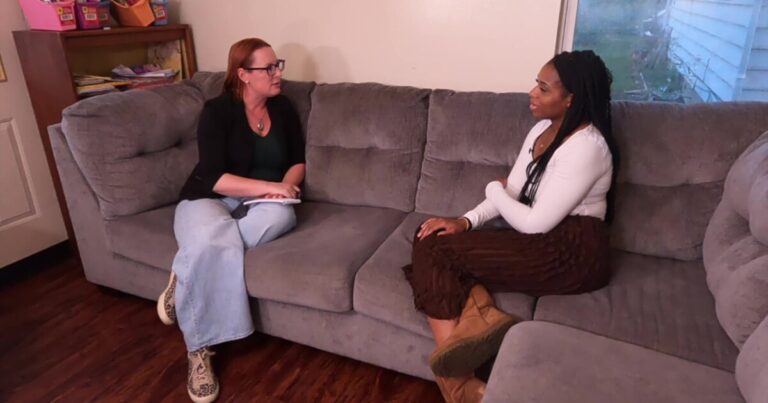LORAIN, Ohio — It took Morisa Ivory two years of searching – and a lot of faith – to find a house.
She and her children were living in a two-bedroom apartment on Cleveland’s West Side, not far from her job. Then the rent started to jump, from $700 to $1,000 a month.
That’s when Ivory began her quest to become a homeowner.
“I knew I wanted a house,” she said. “And I knew the rent wasn’t gonna go down. So … I had no other choice, honestly, but to take that risk.”
Her aspirations were modest. So was her budget, as a working mom with four kids. She started out looking at homes priced around $40,000. As she got promotions and raises at work, she considered properties listed for as much as $85,000 or $90,000.
But at that low end of the market, it’s not easy to get a mortgage.
“I could go through all the steps that they’d require and then get denied at a very sensitive spot. And no explanation,” Ivory said.
Across the country, researchers and consumer advocates say it’s almost impossible to get a home loan for less than $100,000. Yet real estate listings show there are thousands of low-cost homes for sale in Ohio, particularly in cities and rural communities.
“There are still a lot of houses below the hundred-thousand-dollar mark across the Midwest. In places in the Southeast,” said Sarah Mancini, managing director of advocacy for the National Consumer Law Center, a nonprofit focused on consumer protections.
“Unfortunately, many of those homes are being snatched up by investors who can pay cash because it’s so hard to get a mortgage loan,” she said.

Dennis Spronck/News 5
Small-dollar loans require as much work as larger mortgages, with lower rewards for banks and loan officers, according to reports from the Urban Institute, the Pew Charitable Trusts, the National Consumer Law Center and other organizations.
“Run-of-the-mill, profit-driven lenders, they’re not very interested in this business,” Mancini said. “And they will often say ‘we don’t make loans below that amount.’”
And there are other hurdles.
Many banks and mortgage companies sell their loans to government-sponsored mortgage giants Fannie Mae and Freddie Mac. That allows them to free up cash to make more loans. But Mancini said it’s hard for lenders to meet the volume thresholds to participate in the secondary market if they’re making smaller loans.
“There’s just so many aspects of this business model that are more challenging with smaller loans,” she said.
‘A crucial foothold’
Lauren Molnar has seen that firsthand. She worked in mainstream lending for years before joining Believe Mortgage, a nonprofit lender based in Cleveland.
The company is an arm of CHN Housing Partners, a nonprofit focused on providing affordable…
Read More: You can still buy a house for $100,000 in Ohio. Getting a mortgage isn’t as



